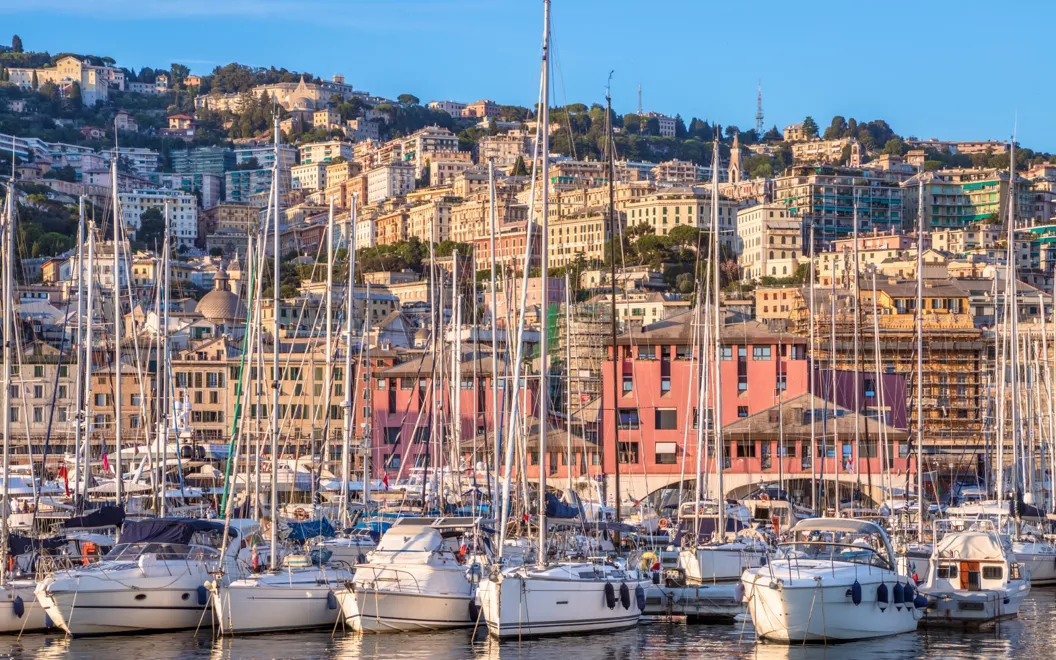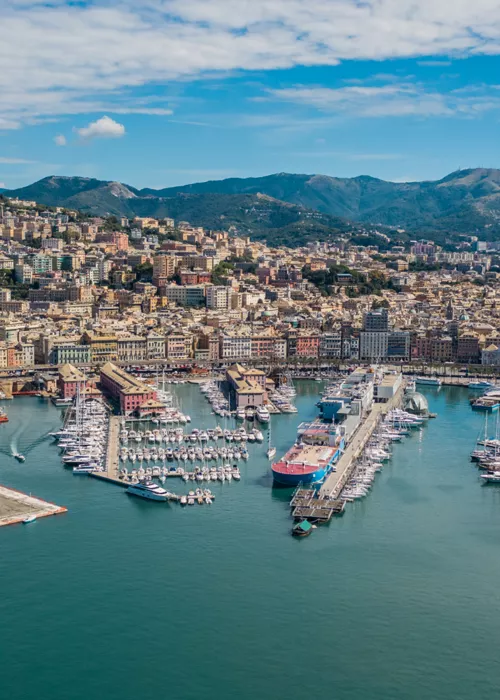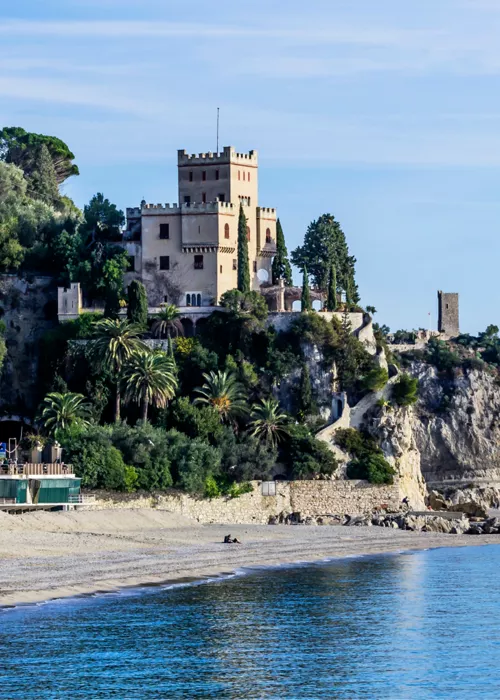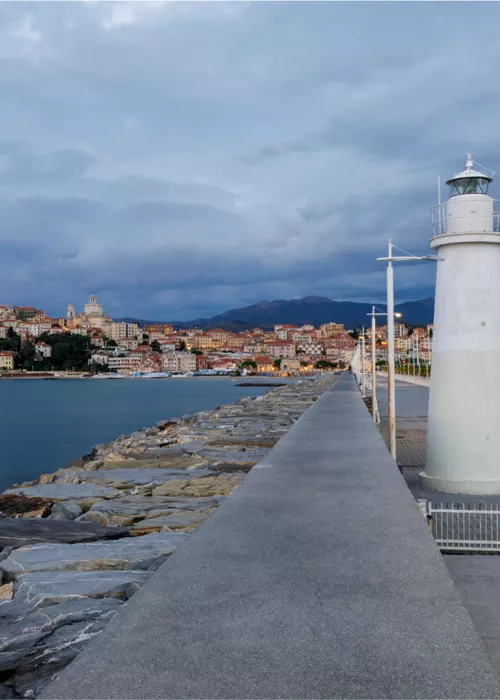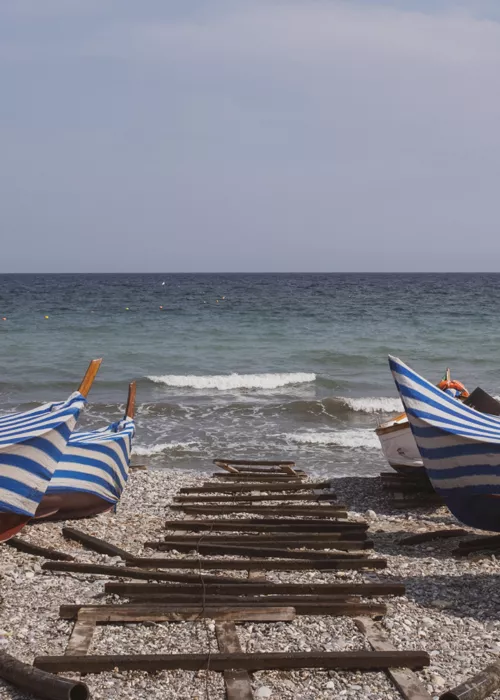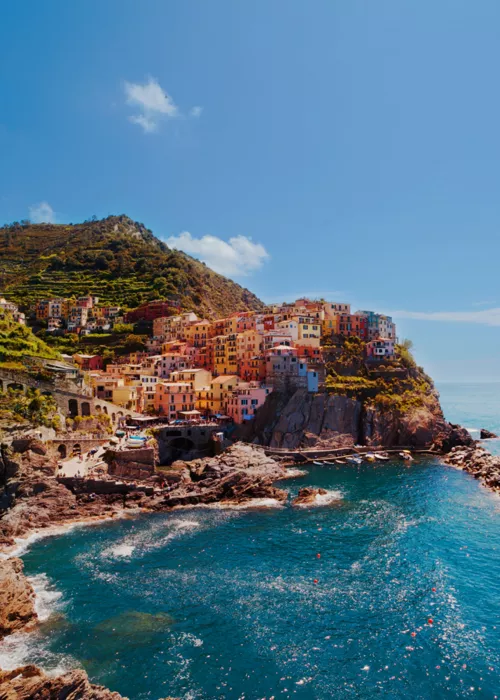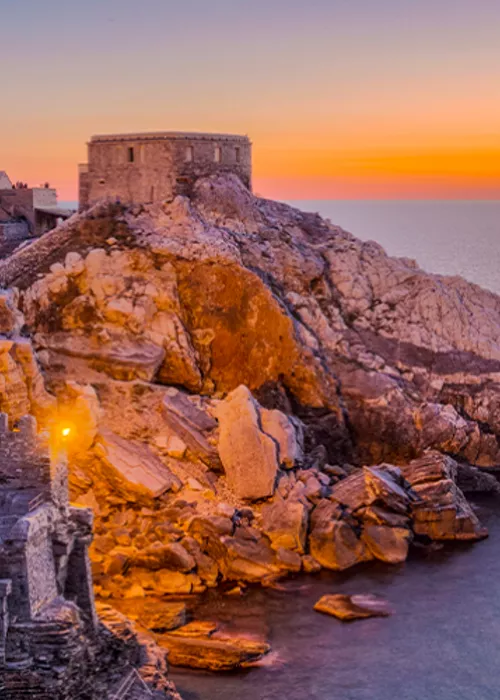The Old Town

The old city, Genoa's historic centre where Fabrizio De André met the last, the poor devils, the excluded, "the flowers that bloom from the manure". The senzadio, the anti-bourgeois by nature that he recounted in songs such as La città vecchia and Via del Campo. This was the darkened alleyway, Faber's evening pilgrimage destination, where he found the company of "a pretty, leafy eyes" that "all night he stands on the threshold, selling everyone the same rose".
In the middle, via del Campo opens in the square of the same name, with a slate plaque dedicated to De André and, a few steps away, Viadelcampo29rosso, space occupied for decades by the historic instrument shop Musica Gianni Tassio, is now a kind of museum dedicated to the memory of De André and other artists from the Genoese singer-songwriter scene such as Luigi Tenco, Gino Paoli and Bruno Lauzi. Rich in memorabilia, original vinyls, photographs, it also holds the Esteve '97, the guitar that accompanied Faber on his last tour between 1997 and 1998.
Fabrizio was also inspired by the frenzy and melting pot of the Sottoripa porticoes, where with Paolo Villaggio he frequented the local Ragno Verde (which is no longer there) and where he wandered among faces of all ethnicities and the stalls of the fried food shops, the ageless fishmongers, with the smell of "frittûa de pigneu giancu de Purtufin" ("fried fish, white of Portofino") in his nose. The quote comes from Crêuza de mä, the song written and sung entirely in the Genoese dialect about sailors returning from the sea. So the next stop can only be the Porto antico.
But first it must be said that the old city was not, and is not, all secrets and sins. The contrast is stark with what is a stone's throw away from this world of the disadvantaged. It takes little to notice the well-to-do city of Genoa, with its elegant aristocratic residences that parade along Via del Campo itself, or the sumptuous and aristocratic palaces of the Rolli of the Strade Nuove (Via Garibaldi, Via Cairoli, Via Balbi, Via Lomellini and Via San Luca), included in the UNESCO circuit. With good reason, given the marvellous façades decorated in stucco, marble or painted, the gardens with fountains and nymphaea, and what they contain: the frescoes in the great halls, the elegant furnishings and the art collections. Going towards the East, the magnificence of the Cathedral of S. Lorenzo, and grand buildings such as the Ducal Palace and those in Piazza De Ferrari, the Carlo Felice Theatre (stage on which Faber has performed on several occasions) and the Borsa palace, one of the finest examples of the Genoese Art Nouveau style.
The Old Port

Long gone are the days of the Crêuza de mä, of those sailors sung about by De André, who return from the sea with their skin burnt by the sun and salt, and who go to dry their bones at Andrea's osteria. Or those of D'ä mê riva, the poignant and melancholic song of a sailor waving goodbye to his sweetheart as she watches him set sail from the pier. Long gone, too, are the times when the Old Port was truly old. In 1992, Renzo Piano brought a modern, attractive new look to this long-abandoned port area. Gradually, new elements have been added to the Port, and today it is something of a beating heart of the city's entertainment area, a cultural centre, but also a destination for strolling and sitting on a bench. The museums: the Aquarium and the Biosphere, Galata Maritime Museum, and The City of Children and Youth. Spaces dedicated to concerts, events, fairs, exhibitions and conferences: the Arena del Mare, the Piazza delle Feste square, the Magazzini del Cotone (Cotton Warehouses). Restaurants, clubs, cinemas and shops. And then the Bigo, the panoramic lift with futuristic architecture, and the piers from which to contemplate the blue horizon or the city, such as the one dedicated to Faber: the via al Mare Fabrizio De André sea walk. Watching over everything, the Lanterna, the city's lighthouse since 1128.
Boccadasse

An iconic, picturesque fishing village in Genoa's Levante area with a nostalgic flavour: this is Boccadasse. A place so dear to Fabrizio De André, who often came to walk up and down its crêuze, the winding, steep brick steps that descend from the town to the sea. It seems as if we are already on the Riviera, but instead it is still Genoa, which never ceases to surprise. Pastel-shade houses wedged together, boats at rest and fishing nets stretched out in the sun, a small beach where it is easy to imagine Faber's Fisherman asleep "in the shadow of the last sun" and sympathising with a murderer with "huge eyes of fear, they were the mirrors of an adventure".. A song that is a hymn to forgiveness, rescue and freedom.
Nervi

Arriving in Nervi means letting yourself go for moments of relaxation, away from the hustle and bustle of the city. This is how Nervi greets those coming from Genoa: pergolas, a medieval bridge, brightly coloured fishermen's houses and a small harbour with boats left aground. The Anita Garibaldi promenade with panoramic views starts here, stretching for 2 km to the small village of Capolungo. In the middle, the nine hectares of the Parks of Nervi, a set of several parks that in the past belonged to private villas such as Villa Gropallo, Villa Saluzzo Serra (now home to the Galleria d'Arte Moderna modern art gallery), Villa Grimaldi Fassio (custodian of the Frugone Brothers' collections) and Villa Luxoro. A set of exotic and tropical plants that combine with the typical Mediterranean vegetation. Once in Capolungo, the DeAndreian reference is to the Sant'Ilario station, where Bocca di Rosa, who "put love above everything else", got off the train.


